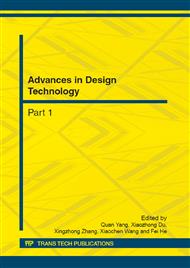p.721
p.726
p.730
p.735
p.741
p.746
p.750
p.754
p.758
Experiments on the Vibration Control of Flexible Rotor Using Shear Mode MR Elastomer Damper
Abstract:
A shear mode magnetorheological (MR) elastomer damper is designed and manufactured, in which the MR elastomer is made by mixing RTV silicone, carbonyl iron particles and silicone oil, and solidifying under magnetic field. A flexible cantilever rotor system with single disk is constructed, and the controllability, effectiveness and stability of vibration control for the imbalance response of the rotor system using the MR damper are experimentally studied. From the test, it is found that as the strength of applied magnetic field increases, the damping and stiffness of the damper are increased; the critical speeds of the rotor system supported on the MR damper is increased distinctly, and the vibration at two critical speeds are restrained; the on-off control method may be used to control the rotor vibration while passing through the two critical speeds. The study shows that the shear mode MR elastomer damper is suitable for active vibration control of flexible rotor.
Info:
Periodical:
Pages:
741-745
Citation:
Online since:
November 2012
Authors:
Keywords:
Price:
Сopyright:
© 2012 Trans Tech Publications Ltd. All Rights Reserved
Share:
Citation:


